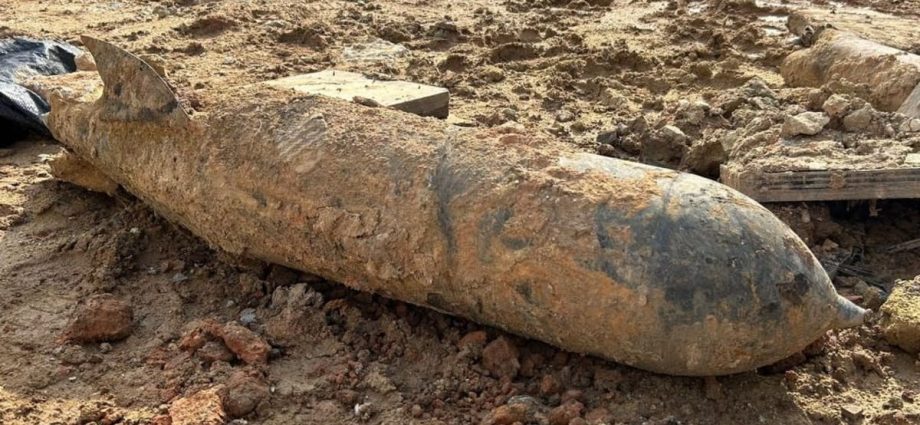
How will the detonation be carried out?
In 2019, the SAF disposed of a 50kg WWII device on-site at Jiak Kim Street.
According to SAF, it was a two-step process which first involved breaking open the casing of the bomb and burning its main explosive components.
The next step was to counter-charge the remaining explosive contents – that is, placing an explosive charge against another to detonate them.
What safety measures will be taken?
Apart from evacuation and road closures, protective and sandbag walls are usually constructed around the device.
When CNA visited the site at Upper Bukit Timah on Tuesday, SAF officers were seen working in an area surrounded by concrete blocks, and carrying sandbags.
Mr Chew said authorities will also check for underground pipes that could be affected.
Safety officers on construction sites should be educated about unexploded ordnance and be aware of the risks of handling such devices improperly, said Explomo’s Mr Goh.
He stressed that EOD experts should be called in whenever a suspected unexploded ordnance is discovered, and workers should not handle the item.
What was the aerial bomb possibly aiming for?
The Japanese dropped aerial bombs over Singapore from Dec 29, 1941 to Feb 15, 1942, said Professor Brian Farrell of the National University of Singapore’s history department.
Allied forces, particularly the Americans, also carried out aerial bombing between November 1944 and mid-1945, said the war historian.
Prof Farrell said a naval base and a dockyard would have been specific targets for both sides.
“Neither could hit anything very accurately,” he added.
Are unexploded war relics common in Singapore?
On average, Blastwork disposes of about one unexploded WWII ordnance a month in Singapore, said Mr Chew.
These are mostly cartridges or mortars.
Blastwork is an authorised contractor of the Ministry of Defence, according to Mr Chew. When an unexploded ordnance is assessed as safe to be moved, a contractor can take over from the authorities and dispose of the device off-site.
However, due to their size, aerial bombs require the SAF’s EOD team to step in for on-site disposal, said Mr Chew.
He noted that sand imported by Singapore for land reclamation could also contain unexploded ordnance at times. These will also have to be disposed of.

